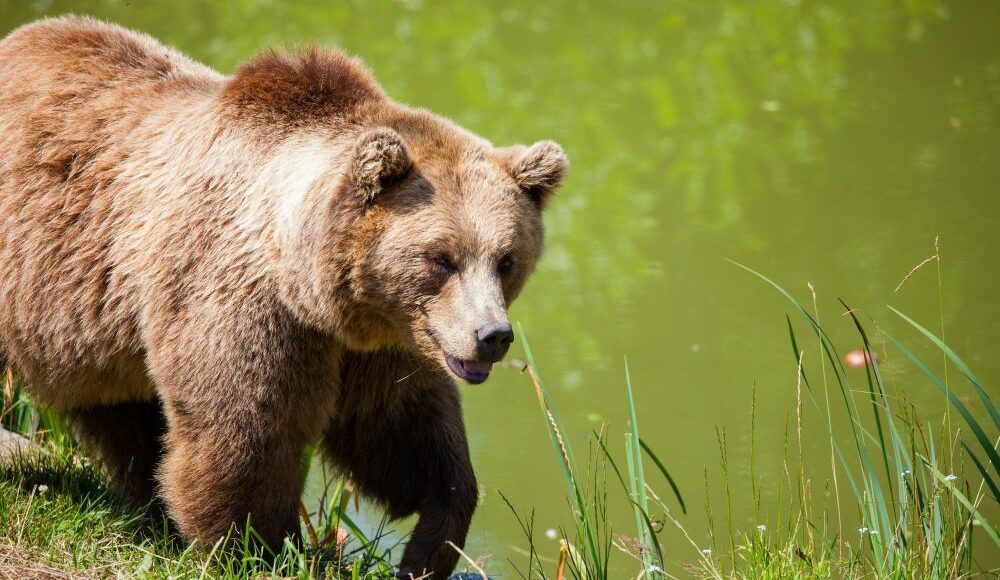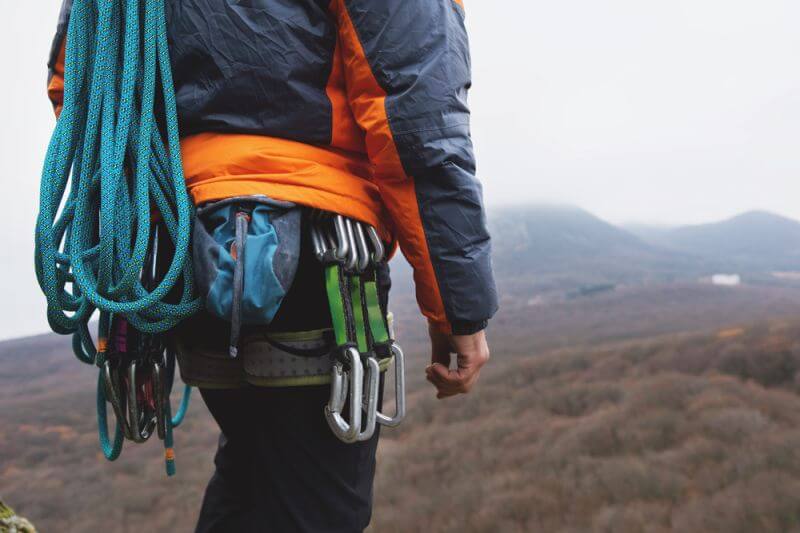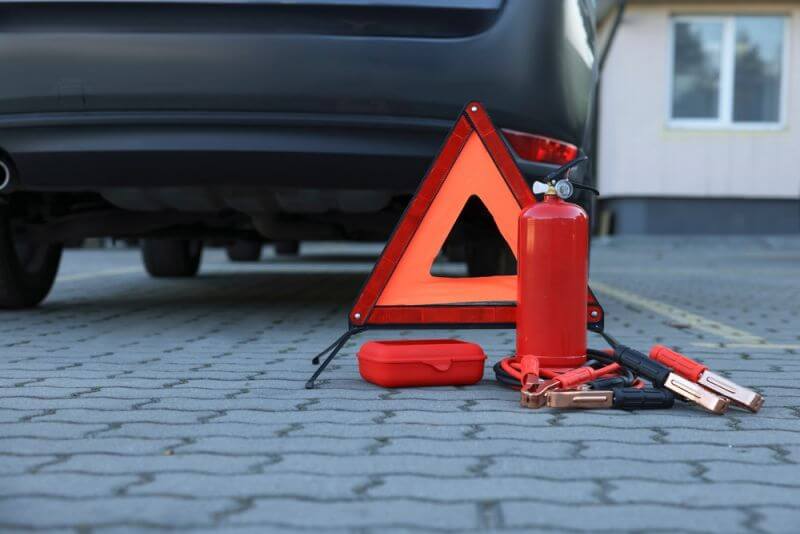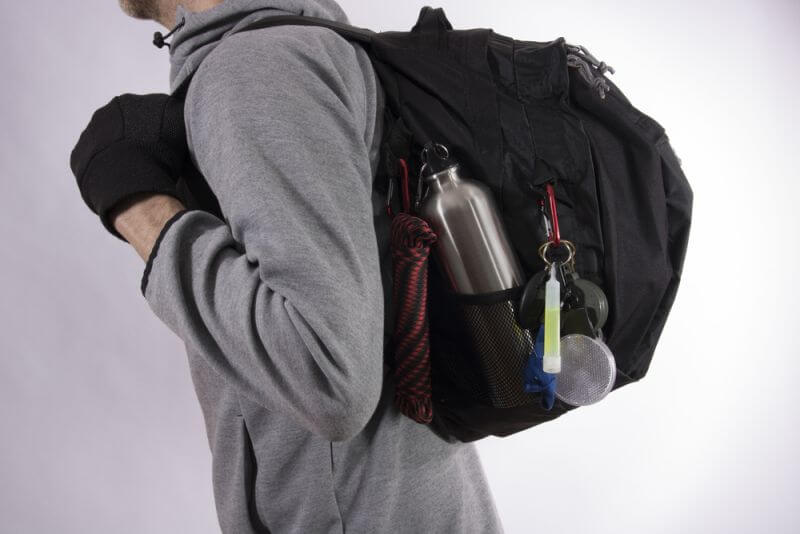Two to five people are victims of bear attacks every year in North America. Although the numbers are significantly lower in some European and Asian countries, the trend is worrying.
Most attacks occur when a human threatens or startles a bear and makes it feel that it is in danger. The bear will only attack if it thinks its cubs are threatened in other cases. However, if a bear attacks, it can do so with lethal force. Here are a few tips on how to survive a bear attack.
1. Remain calm
When you spot a bear nearby, the most important thing to remember is not to panic. Bears can sense fear, and if you’re scared, they may become more agitated and attack. Try to keep your cool and slowly back away from the bear. Make sure to stand up straight, don’t make sudden movements, and avoid eye contact. Eye contact signifies aggression to bears. However, don’t look away. Doing so means submission, and the bear may see you as weak and easy to attack.
2. Make yourself big
If a bear does charge at you, make yourself look as big as possible. Bears are usually only aggressive when they feel threatened. By making yourself look more prominent, you may be able to intimidate the bear and make it back away.
3. Don’t run
Running away from a bear may trigger its predatory instincts and cause it to give chase. If you can’t back away slowly or make yourself look big, try to stand your ground and fight back. Bears are often intimidated by loud noises. Make as much noise as possible by yelling, clapping your hands, or banging on pots and pans. You can also use bear spray to deter the bear. Since you cannot outrun it, find other tactics to prevent the attack.
4. Is it advisable to climb a tree?
If you’re attacked by a bear, climbing a tree is one of the many options that might cross your mind. Bears are good climbers, but they usually won’t bother to climb a tree if there’s no food at the top.
Once you’re up the tree, keep your distance from the bear, and don’t come down until you’re sure it’s gone. However, the problem is whether you can outrun the bear up a tree. If you can’t, the safest option is to stay calm on the ground.
5. Learn about bears before getting into their territory
If you live in an area with many bears, be prepared as you might encounter one sooner than later. Make sure to carry bear pepper spray with you at all times, and know how to use it. You should also familiarize yourself with the types of bears in your area and what to do if you encounter one. For instance, black bears are usually less aggressive than grizzly bears. You may be able to scare them off by making yourself look big or making noise.
6. Know when to play dead
If a bear knocks you to the ground, it may be best to play dead. Try to curl up in a ball and protect your head and neck with your hands. Another option is to lie flat with your legs wide apart. Once the bear loses interest, it will usually wander off.
However, if the attack is unprovoked or the bear is a grizzly, fighting back is your best bet. Grizzlies are more aggressive than black bears, and they can kill you with one swipe of their paw.
7. Understand whether the bear is attacking in defense or predatory reasons
A bear can attack for two reasons: either because it feels defensive or because it’s being predatory. If a bear is defending itself, it’s because it feels threatened or startled. In these cases, the best thing to do is remain calm and slowly back away. However, if the bear is being predatory, be more alert and, if possible, fight back.
A bear with young cubs is typically more defensive and aggressive. The best bet is to put as much distance as you can between you and the bear. Since black bears live near human settlements, they’re more used to people and are usually less aggressive than grizzlies.
Immediately note the type of bear attacking you to understand what action to take. If you realize its cubs are nearby, back off immediately and give the mother bear time to collect her cubs and leave the area.
8. Know your surrounding well
Whether hiking, camping, or just walking in the woods, be aware of your surroundings. If you see a bear in the distance, avoid getting too close and give it plenty of space to move away. If surprised by a bear at close range, back away slowly while making as much noise as possible, if necessary. The bear will often be as surprised as you are and scamper away.
When new to an area, walk-in groups keep dogs on a leash and make noise to avoid surprising bears that may be feeding or with cubs nearby. Wearing bear bells can also help you avoid an encounter altogether.
9. Understand that bears have a strong sense of smell
Bears love human food and will go to great lengths to get it. If you’re camping, make sure to store all of your food and garbage in a bear-proof container. Bears can smell food from up to 20 miles away, so keep your campsite clean and never feed a bear. When attacked by a bear and you have some food on you, it’s best to drop the food so the bear isn’t further agitated.
Since bear attacks in homes are also common, take precautions to prevent them. Bears are attracted to houses by the smell of food. Keep your garbage and other food items in a bear-proof container to deter them from coming near.
Bears can also break into homes, so ensure your doors and windows are secured. Since they love low, wet, thick areas, you should also trim back any bushes or trees close to your home.
10. Carry bear spray
Bear spray is a non-lethal way to deter a bear attack. The spray will irritate the bear’s eyes and nose, causing it to back away. Know how to use the spray before you need it by reading the instructions carefully. Always ensure the bear spray is easily accessible to grab and use if required.
11. Utilize bear weaknesses
Bears may be large and intimidating, but there are some ways to fight back to increase your chances of survival. For example, bears have sensitive noses, so spraying bear pepper spray in their direction can be effective.
If you have to fight back, aim for the bear’s nose, eyes, and throat. Note that bears can run as fast as racehorses up or downhill. Your best option is to stay calm, play dead or slowly move away if the bear is defensive or fight back if it’s predatory.
12. Fight with whatever you have
When attacked, use whatever you have on hand to fight back. If you’re carrying a backpack, swing it at the bear’s face. If you have a knife, use it to stab the bear in its face or throat. Don’t forget to make as much noise as possible and look big to scare it away.
Fighting back is your last resort, so use it wisely. Note that punches and kicks are ineffective against bears, and you may get hurt trying to fight one. However, a punch directed at the bear’s nose may impact, making it back off. You’ll have a chance to escape. In addition, note that when you inflict pain on a bear, it might stop attacking or become more aggressive as you’re a perceived threat.
13. Run as soon as it’s safe to do it
If you’re playing dead on the ground, don’t get up until the bear is gone. If you’re slowly backing away and the bear stops advancing, go ahead and run if it’s safe to do so. Don’t turn your back on the bear or run towards other people or bears. Sometimes, a bear will stick around to see whether you’ll revive after an attack. If the bear leaves but circles back, it’s best to play dead again.
14. Let someone know where you are
If you’re out hiking or camping alone, let someone know where you are at all times. This way, if attacked, they’ll be able to find you quickly. A GPS tracking device can also come in handy in an emergency. However, it’s always best to hike in groups, as there is safety in numbers.
15. Get help as soon as possible
If a bear has attacked you, get medical help as soon as possible. Even if you don’t have any visible injuries, you may have internal bleeding or other injuries that need treatment. If you have bear pepper spray on your skin or clothes, wash it off as soon as possible.
Endnote
When camping or hiking in bear country, always be prepared for a potential encounter, remember, bears are large and powerful animals that can inflict serious injuries. Always be on the lookout and take time to learn how to survive an attack. By following these tips, you can increase your chances of survival if you find yourself in this situation.








JD | April 8, 2022
|
If a grizzly or brown bear play dead, if a black bear fight back like your life depended on it because it does…
William Phillips | April 8, 2022
|
“If the bear is a Grizzly, fighting back is your best bet…” Wrong! With a Grizzly the bet play is to play dead, take the mauling, and hope you survive to walk out. The long term rule is with Grizzlys, play dead! With Black bears, you fight back with everything you have as Black Bear attacks are usually predatory in nature. i.e. They see you as food. This was probably a typo but it needs to be corrected.
Robert Russell | April 8, 2022
|
Following the advise in this article will end up in your death. Grizz versus black are two different situations and no situation is typical. Be aware of cat too. Last year we had 2 bear attacks within 60 Mike’s of our low human population location. Comment made from our remote AK cabin where we have all three in close proximity to the cabin.
Rebecca | April 8, 2022
|
Unprovoked BLACK bear attacks are rare and when I researched it back in 2012, there were NO unprovoked black bear attacks in NC. I would think the black bears in other states are similar. I have seen black bears in person 2x, they did not come near me.
Marty | August 31, 2023
|
Your assumption can be wrong. In Utah’s Central Mountains, two brothers in their tent while hunting were attacked inside their tent during the night. One brother was killed by the Bear, while the other escaped. Don’t ever think you are safe from Black Bears, they are wild dangerous animals.
Geoff M | April 8, 2022
|
Historically, using a pistol that is immediately accessible, (ie, in a holster outside your coat) to shoot the bear, not scare it, is almost always effective. Bear spray has not been as effective, particularly for very aggressive bears. These data are true for both black and Grizzly bears. The use of a pistol as a last resort against polar bears also seems effective, but there are too few data points to be meaningful yet. The Danish Sirius Patrol that patrols the wilds of Greenland carry 10mm Blocks as well as rifles, and have dispatched a couple of Polar Bears with them. Again, pistols are carried as a last resort. The most important information is knowledge about the bear’s anatomy, the ability to shoot your pistol of choice accurately under stress (which requires practice) is also important.
Dave | April 8, 2022
|
Good article.
The National Park Rangers are advising hikers in Glacier National Park and other Rocky Mountain parks to be alert for bears and take extra precautions to avoid an encounter.
They advise park visitors to wear little bells on their clothes so they make noise when hiking. The bell noise allows bears to hear them coming from a distance and not be startled by a hiker accidentally sneaking up on them. This might cause a bear to charge.
Visitors should also carry a pepper spray can just in case a bear is encountered. Spraying the pepper into the air will irritate the bear’s sensitive nose and it will run away.
It is also a good idea to keep an eye out for fresh bear scat so you have an idea if bears are in the area. People should be able to recognize the difference between black bear and grizzly bear scat.
Black bear droppings are smaller and often contain berries, leaves, and possibly bits of fur. Grizzly bear droppings tend to contain small bells and smell of pepper.
Geoff Meade | April 28, 2022
|
2 things occur to me here. First, if bears generally attack when they feel threatened, why would you want to make yourself look bigger and more intimidating?
Second, and far more important, is the fact that defending against a bear attack with a handgun, carried in a readily accessible manner (ie, not in a backpack or under your coat) is almost always effective. More than 98 percent of the time, far more than bear spray. See Dean Weingarten’s extensive and we’ll researched studies for more data. If you are going to be out in bear country, regardless of the type of bear, carry a centerfire pistol and learn about bear anatomy.
mark t. maclellan | April 8, 2022
|
Good catch and thanks for clarifying. I have also heard black bears often eat dead things, so don’t play dead with a black bear.
Alan Osborn | February 12, 2023
|
Trying to fight any bear is rediculous. THEY choose the fight or not and wether you’ll live or die.
Playing dead is best for grizz and distraction with a walking stick is best for a black bear. Sometimes they won’t stop walking along side of you, sniffing and checking you for food. The minute you attempt your futile counter attack on a grizz, his instincts are to immediately charge to kill. The level of a bears hunger and anger determine your fate. Generally, black bears don’t eat humans but grizzlies are carnivores. Also, a black bear can climb up a tree as fast as a cat!!
Cal | August 31, 2023
|
Why in the world would anyone go into bear country on foot without at a minimum a 44 magnum revolver or 10 mm semi auto. Better yet I’d have my Marlin 45-70 with me as well.
James Rancourt | August 31, 2023
|
When in bear country carry a 45/70 rifle and be prepared to use it. It will stop a grizzly. 🙂
Cal | August 31, 2023
|
As the old saying goes, “if it’s brown, lay down, if it’s black fight back”.